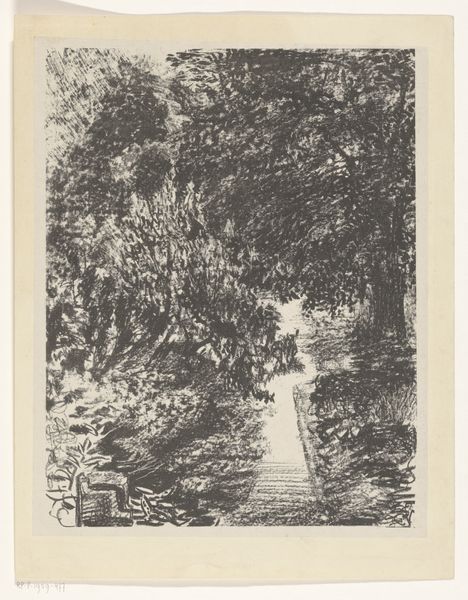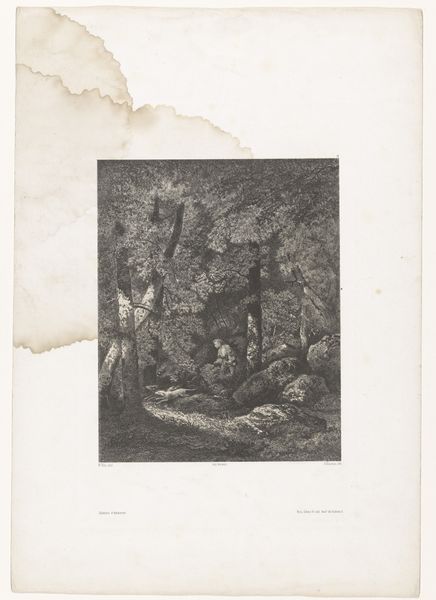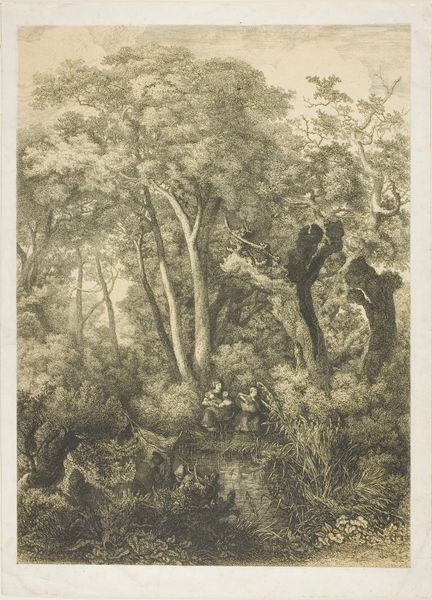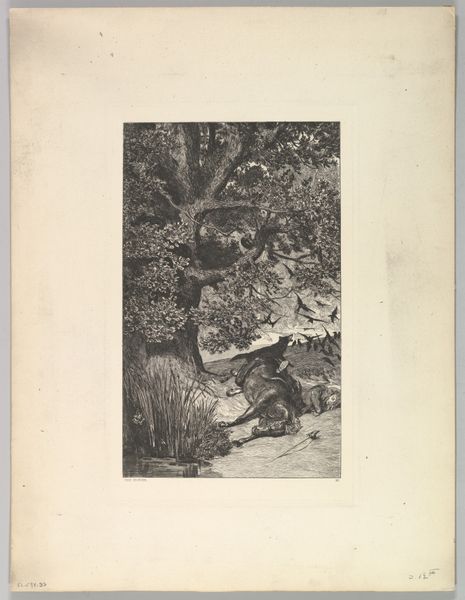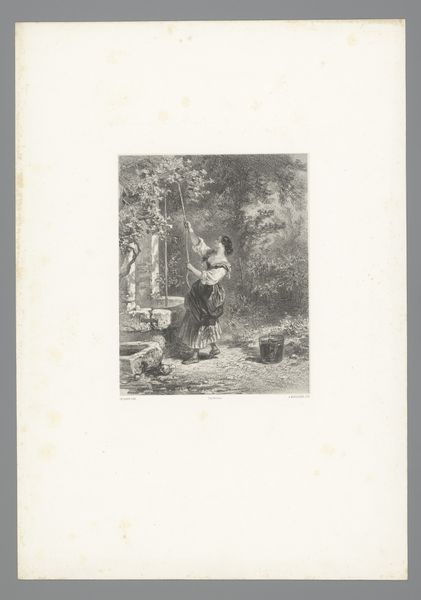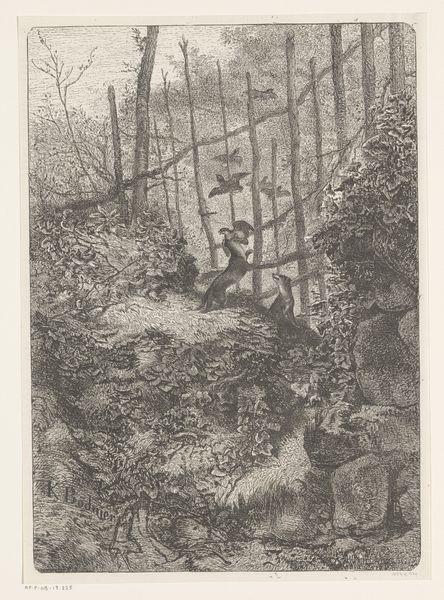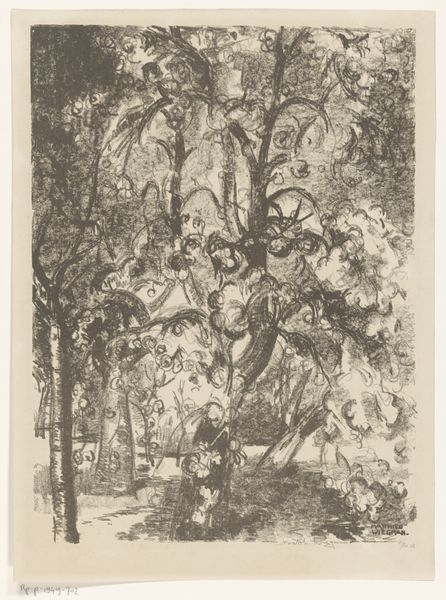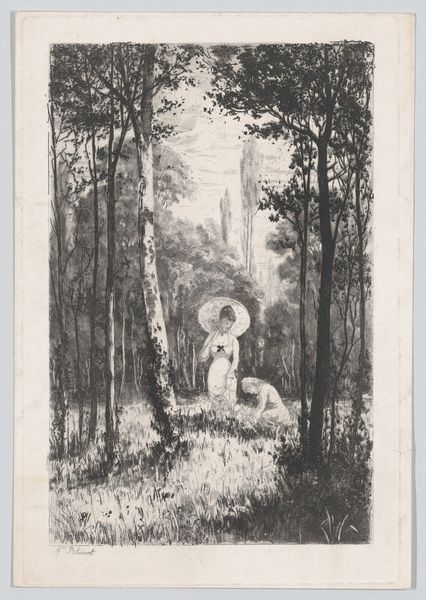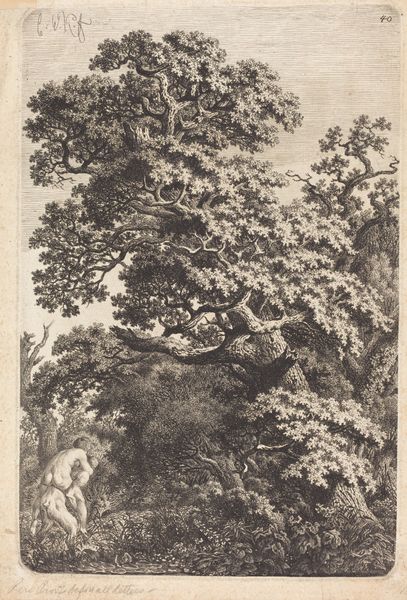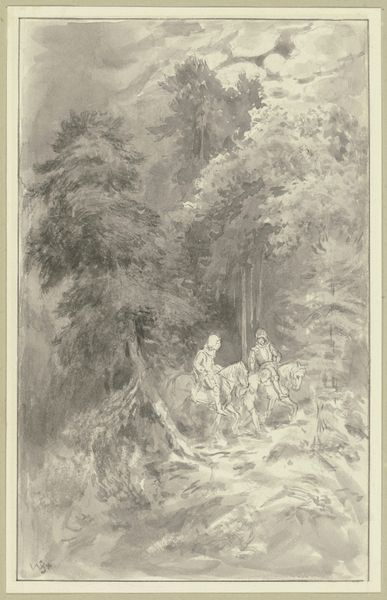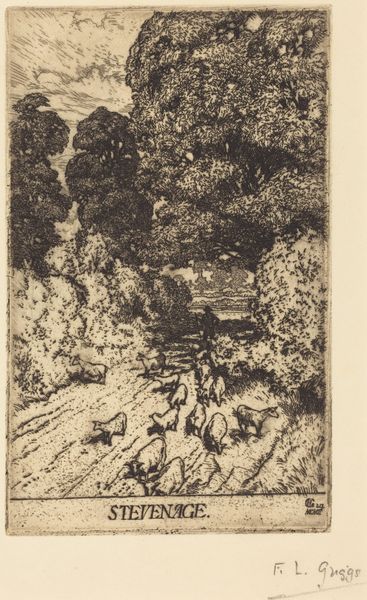
drawing, print, etching
#
drawing
#
garden
# print
#
etching
#
landscape
#
bird
#
personal sketchbook
#
sketchbook drawing
#
sketchbook art
#
realism
Dimensions: height 330 mm, width 235 mm
Copyright: Rijks Museum: Open Domain
Curator: Here we have "Birds by a Pond in a Garden," an etching by Carel Adolph Lion Cachet, created around 1932. It's currently held at the Rijksmuseum. Editor: It strikes me as an unusually active and vibrant composition. Despite being a monochromatic print, the garden setting feels teeming with life—almost overwhelming. Curator: That's an interesting reaction. Considering Cachet's wider body of work, and the colonial contexts that influenced the artist’s vision, this sense of abundance and nature’s profusion might be read through the lens of exoticism, a vision of a paradise as seen by the Western gaze. What do the birds signify for you? Editor: Immediately, the image resonates with depictions of the "peaceable kingdom"—the birds representing souls, their flight freedom, and the pond a source of communal sustenance. The symbolic bird has always represented aspects of the soul, often carrying prayers heavenward. Their presence in a garden points to safety and nurturing. Curator: Yet it's also vital to consider that depictions of gardens, while seeming idyllic, also function as visual claims to ownership, cultivation, even domination. It becomes a question of power and how nature is organized or framed. This isn't simply a snapshot; it reflects intentional shaping. Editor: I can definitely see that. There’s a kind of ordered wildness. Look how strategically the eye is drawn into the heart of the dense foliage! Cachet creates these layered spaces where symbolism merges into a realistic yet heightened representation. Curator: Indeed, this tension highlights the colonial gaze I mentioned before. It is also crucial to notice Cachet's artistic choices in medium, choosing the etching and print – reproducible techniques – rather than an unique artwork. How is this connected with issues of ownership, of copies, originals and wide audiences? Editor: These are excellent points. It certainly changes how one reads the artwork—from an appreciation of a lovely landscape to a critical interrogation of social power reflected in the artistic representation. Curator: It is a good exercise to challenge our gaze, don't you think? It opens the possibility of new discourses around these types of images. Editor: Absolutely. Looking closely, questioning accepted meanings — it enriches our understanding and allows for a far more thoughtful experience with any work of art.
Comments
No comments
Be the first to comment and join the conversation on the ultimate creative platform.
